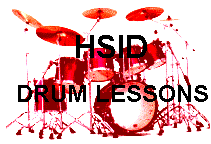 

Lesson Menu #2
Intermediate & Advanced.
Lesson Menu #3
Advanced & Ultra-Advanced.
Lesson Menu #4
Text lessons: All levels.

PRODUCTS:

GET ALL THE PRODUCTS AT ONE LOW PRICE.

SURPRISES ABOUND . . . For those with a bit of generosity
in their soul.
CLICK HERE , to see what I mean.

Intermediate & Advanced
Drummers
 Your future is waiting.
Your future is waiting.

ALL MUSICIANS
MASTER
ALL RHYTHM,
This FASCINATING WAY!
 Discover the 'LOST KEY' for Unraveling
ALL the mysteries of rhythm, and musical time.
Discover the 'LOST KEY' for Unraveling
ALL the mysteries of rhythm, and musical time.
This work
is the crowning-achievement of my 50 year career, and it's
my proudest accomplishment.
It contains the potential to help YOU change the face of modern music!
You'll love it! CLICK HERE to check it
out completely! You're in for a MAJOR surprise!
 "PRE-SCHOOL DRUMMER?
"PRE-SCHOOL DRUMMER?
YES!"
Can we teach rhythm
to pre-schoolers? YES!

This is a very short course,
designed to help adults plant the seeds of rhythm
into children of nearly any age.
CLICK HERE
 FREE ELECTRONIC BOOK BONUS (also included)
FREE ELECTRONIC BOOK BONUS (also included)
 BUSINESS OPPORTUNITY:
BUSINESS OPPORTUNITY:
MAKE BIG MONEY SELLING USED DRUMSETS!
* INSIDER HARDBALL-BUYING-TIPS AND SECRETS.
* UNIQUE RECOVERING SECRETS

Support this site and and gain an advetising bargain with the deal.
 Place a permanent ad here. Place a permanent ad here.

GET ALL THE PRODUCTS AT ONE LOW PRICE.

SURPRISES ABOUND . . . For those with a bit of generosity
in their soul.
CLICK HERE , to see what I mean.

|
|
Downloads *
Drummers Trivia *
Drummers Chat Rooms *
Rudiments *
Digital Music *
Knowledge Assessments *
TD Archives *
Drum Set Buyers Guide *
Bass-Player Jokes *
Assembling a Drum Set *
Parts of a Drum Set *
About HSID *
Video Troubleshooter
Bill Powelson's

School of Drums
Back to the Tempo Dispatch Archives
Issue #4_____\__\__\__\__\__________/__/__/__/__/APRIL 97
TABLE OF CONTENTS
What is in this issue?
Contents:
1. Feature Article: Improvised Fills using the Hi-hat
2. Bass Player Joke of the month
__________________________________________________________________
*** FEATURE ARTICLE ***
For APRIL 97
===============================================
*** BEGINNERS CORNER ***
===============================================
SPECIAL NOTES:
#1. In the lesson that follows, I am assuming you have
studied the BASIC DANCE BEATS:
#2. I realize that many of the subscribers to this
newsletter do not own a drum set. No problem! You can practice these
routines right where you are. Use your imagination! Tap on anything
nearby and pat your feet on the floor. Get accustomed to practicing
this way. I recommend it for everyone, including those who DO own a
drumset.
===============================================
*** USING THE HI-HAT ***
There are many approaches to using the hi-hat but the most
common technique is to kick the hi-hat on the 'back beat' of the
particular dance beat you may be playing. The 'backbeat' is the snare
portion of the basic dance beat. If you are playing 8th note rock as it
is
shown below, your right hand will be on the ride cymbal and you will
kick the hi-hat with your left foot as you connect with the third
cymbal and simultaneous snare. ( Left-handed students must do their
own transposing here.)
============================================================
SPECIAL NOTICE:
NOT ALL E-MAILERS ARE CREATED EQUAL!
The fonts in your E-mail program may not be the same as mine.
This may cause the notation (below) to shift and appear improperly
spaced.
The font being used in this note is New Courier, 9 point.
============================================================
8TH NOTE ROCK:
C C C C Ride Cymbal (Right hand)
S Snare (Left hand)
B Bass (Right foot)
X Hi-Hat (Left foot)
Get accustomed to kicking the hi-hat with each repetition of
the above pattern as you jam with your favorite recordings. It will
become second nature with only a little practice. Try doing the same
thing with *ALL* the basic dance beats. You *DO* have all the basic
dance beats memorized! Right?
NOTE:
The Waltz beat is an exception. Many drummers kick the hi-hat
on 2 & 3 of most Waltz beat patterns.
===============================================
*** INTERMEDIATE CORNER ***
===============================================
MAGIC FORMULA FOR SIMPLE FILLS:
One of the most common E-mail questions I receive at the
website, concerns fills (ie; dropping rolls into a song while
jamming). Everyone seems to be looking for a 'magic formula' to
help them develop their roll patterns.
I learned by listening to various drummers and imitating their
rhythmic ideas. I recommend this to everyone, but there are other things
we can do to make the learning process a little easier.
==================================================
NOTE:
The following trick will work with nearly any dance beat
pattern, but for simplicity, we will use the 8th note rock beat to
illustrate the idea. If you have not learned to play the 8th note
rock beat yet, go to:
THE DRUMMER'S APTITUDE TEST:
==================================================
IMPROVISED FILLS
In this exercise, you will learn to jump from a basic dance
beat, then improvise (or make up) a random fill and return to the beat.
It is easier than you think, if you are comfortable using the
hi-hat as it was studied in the 'Beginners Corner' above.
LET'S DO IT!
Play a repetitious, basic 8th note rock beat and kick the hi-hat
as we learned earlier (above). Get it going! Keep it going for awhile,
then stop hitting the ride cymbal and snare.
That's right! STOP YOUR HANDS, but continue with both feet.
Hold both arms over the drums, but don't hit anything yet. Your feet
will be playing the steady beat, producing a "boom, chic, boom,
chic" effect.
Keep the feet going in steady rhythm, just as they were when the
hands were engaged. If you were playing along with a song, the feet would
remain 'in time' with the music. Got it?
OK! You are half way home! The feet are still marking
time . . . boom, chic, boom, chic . . .
Begin thrashing at the drums with both hands! Do anything you
want but don't lose the flow of the bass and hi-hat. The . . . boom,
chic, boom, chic . . . effect should remain steady as you thrash about
with the hands. Bang away on the snare, go to the toms and back. In
short, do anything that sounds good to your ear. Challenge yourself to
do this for long periods of time as the feet maintain the steady rhythm.
It gets easier with a little practice!
You are now playing an improvised fill!!! That is all there
is to it! The hard part will be in returning to the beat, without
losing tempo.
RETURNING TO THE BEAT . . .
Ok! You are still thrashing away at the drums with both
hands while the feet are marking time . . .
Resume playing the beat on *ANY* bass drum (or right foot)!
Your right foot has not stopped (we hope). Each right foot marks the
beginning of another repetition of the beat . . . so, just come in
playing the (8th note rock) beat on *ANY* boom sound or right foot.
(LEFTIES: You must do your own transposing here.)
REMEMBER THESE THOUGHTS:
You can do anything you wish as a fill . . . and the fill
may be of any length you desire. You may play on any of the drums
(objects) in front of you. Just maintain the beat flow with your feet
as you play your fill. This way, you will never lose track of the beat
flow within the music.
Practice the above lesson without music until it becomes
'natural' or 'second nature'. Then try it with simple, medium tempo
songs. You needn't wait for the drummer on the recording to play a fill
either. You can add your fills anywhere you choose for now, while you
are learning.
Later on, you will learn to be selective about fill
placements. Fills are normally used by drummers to 'fill' up the holes
or dead spots in a song. We usually save our fills for those little
empty gaps in the music where nothing much is going on (i.e. between
verses or leading into the chorus of a song).
There is more to think about here but we will save it for the
'Advanced Corner', coming up next.
===============================================
*** ADVANCED CORNER ***
===============================================
The above lesson is definitely not intended as a substitute for
getting around the 'rudiment' issue. It is only intended as a primer to
rudiment studies.
If you know your rudiments and rolls, the same instructions
will apply with one marked difference. You will no longer be thrashing
at the drums! Instead, you will be executing your own interpretations
of the academically accepted roll patterns (i.e. N.A.R.D. rudiments and
other standardized rolls).
As an interesting freebie, check out the following 'hidden' URL
at the website. Advanced Rudiments, Rolls & Fills (Part II)"
________________________________________________________
|________________________________________________________|
BASS PLAYER JOKE OF THE MONTH
A couple, who's relationship was on the rocks, went to a
marriage counselor who could not get them to discuss
anything. The communication block was so heavy that
nothing he suggested could make them open up and talk.
Finally after several sessions of non-communication, the
counselor stands up, walks to the corner of the room and
produces a bass guitar. He brings it to the couple, plugs it
into a small practice amp and begins to play fervently.
Gradually their barriers break down and they begin to
discuss their problems and little things that always bothered
them that they never felt encouraged to bring up before.
At the end of the session, they were smiling and laughing
just like old times.
They paid their bill and before leaving, the couple asked the
counselor, "What did you do? How did that song help make
everything work out?"
He answered simply, "Everybody talks during the bass solo."
________________________________________________________
|________________________________________________________|
This topic could save you YEARS and give you renewed ambition.
C-YA NEXT TIME!
END OF TEMPO DISPATCH #4 4/5/97

Copyright Bill Powelson 1994 all rights reserved.
| |



